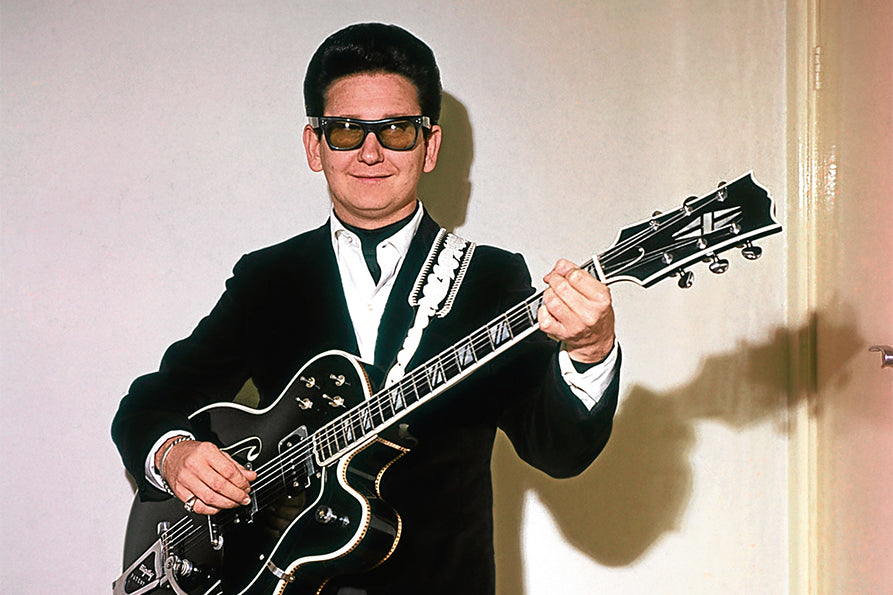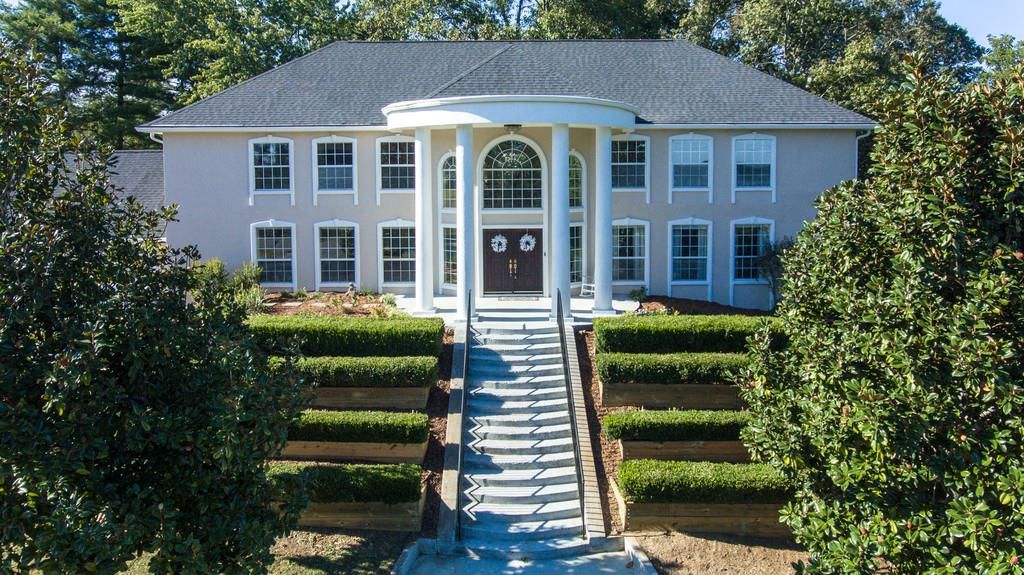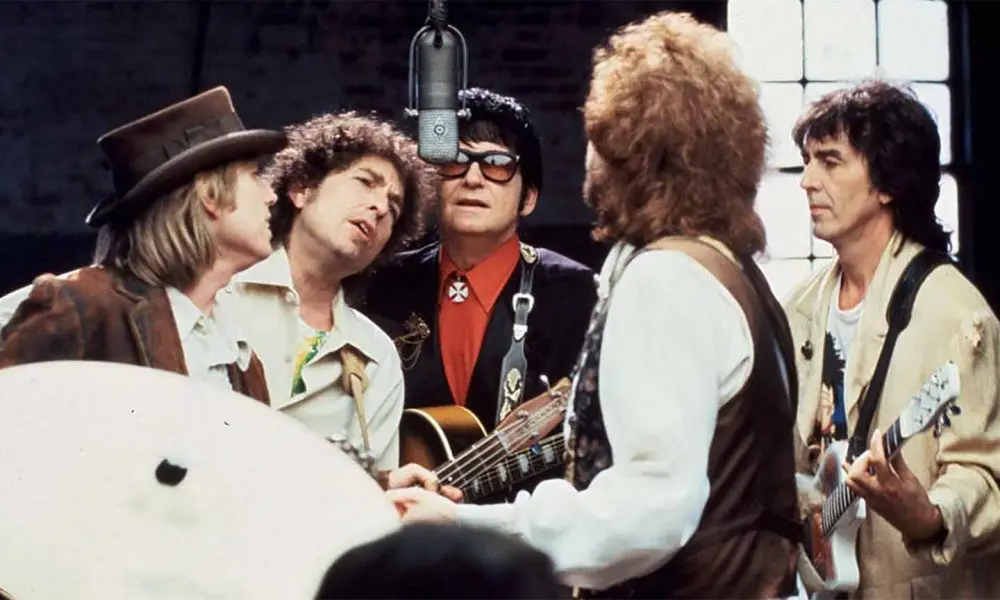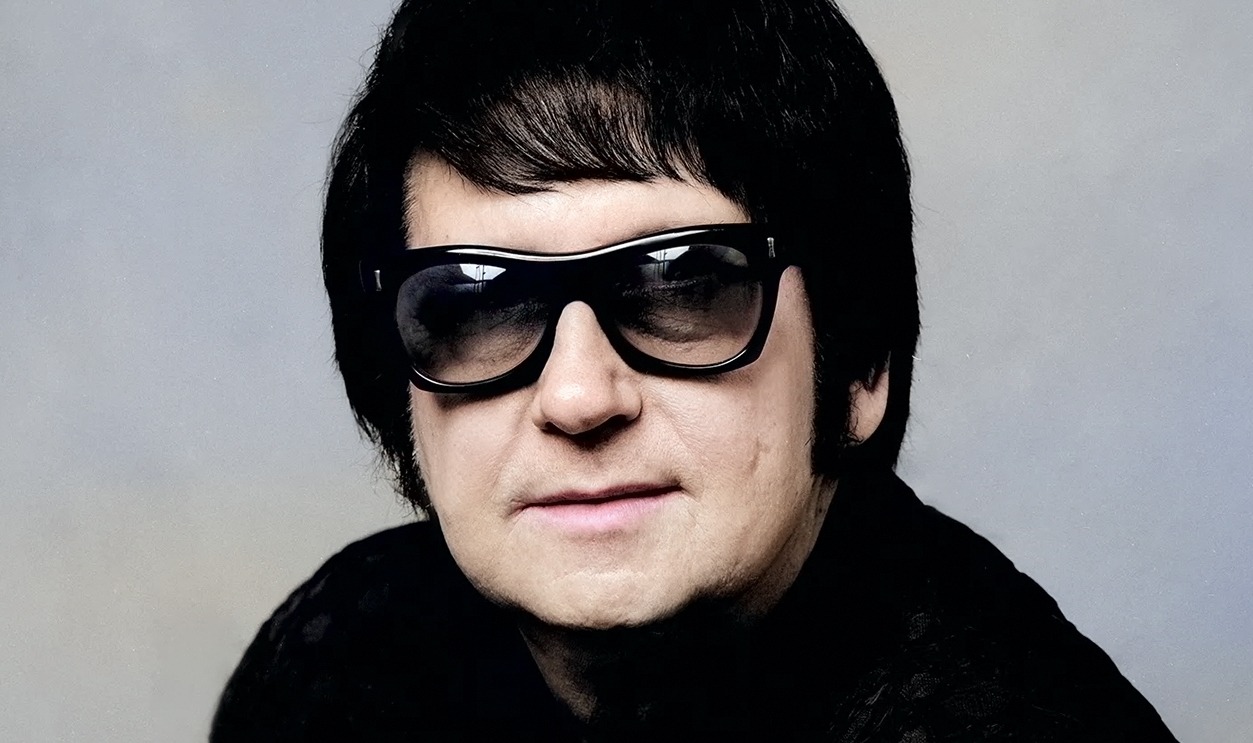Beyond the Shades: What Was Roy Orbison's True Net Worth?
“I may be a living legend, but that sure don't help when I've got to change a flat tire.” – Roy Orbison
Roy Orbison, a musical icon known for his haunting voice and innovative songwriting, achieved immense success with 22 Top 40 hits, on the US Billboard chart including two No. 1 singles: “Running Scared” and “Oh, Pretty Woman.” According to BestSellingAlbums.org, His album sales surpassed 9.8 million worldwide, earning him widespread adoration and the profound respect of fellow artists, notably Elvis Presley, who called him "the greatest singer in the world."
Orbison's signature black attire and dark sunglasses, initially adopted by accident, became a crucial part of his stage persona, offering confidence to the famously shy performer. Beyond his image, his career success led to a substantial financial legacy; his estate was valued at approximately $20 million at the time of his death in 1988, carefully managed by his family since.
This article will delve into who inherited Orbison’s wealth, the cause of his untimely death, his age difference with his wife, his lifelong disability, and the tragic fate of his first wife and sons.
Early Life & Career Beginnings: Laying the Foundation

Roy Orbison, the legendary voice behind “Oh, Pretty Woman,” whose music catalog continues to generate millions for his estate.
Roy Kelton Orbison’s path to his success began in Vernon, Texas, where he was born on April 23, 1936. Gifted a guitar at six, he absorbed the sounds of country legends like Hank Williams and Lefty Frizzell, blending them with West Texas blues and rhythm & blues to create a style uniquely his own.
By his teens, Orbison was performing with his first band, the Wink Westerners, later rebranded as The Teen Kings. In 1956, a recommendation from Johnny Cash led him to Sun Records in Memphis—the legendary label that launched Elvis Presley. There, Orbison recorded his first minor hit, "Ooby Dooby," which peaked at No. 59 on the pop charts according to the Roy Orbison Official Biography, and began earning from touring and songwriting, including penning "Claudette" for The Everly Brothers.
While his Sun Records years didn’t generate major royalties—Orbison later cited poor financial returns, reportedly selling his copyrights (excluding "Claudette") to buy out his contract as reported in the 'Sun Records and the birth of rock 'n' roll' book by Colin Escott and Martin Hawkins.
The period was crucial in building his professional credentials, catalog, and signature sound. These formative years laid the groundwork for the enduring catalog value and intellectual property rights that would eventually underpin his multimillion-dollar estate.
What Was Roy Orbison’s Net Worth? Unveiling "The Big O's" Fortune
Estimating the exact net worth of Roy Orbison at the time of his death in 1988 isn’t simple. Like many legendary artists, precise financial records remain private. However, based on his record sales, songwriting royalties, licensing deals, and posthumous catalog earnings, most credible assessments place Orbison’s estate at approximately $20 million at the time of his passing according top The Independent.
The Core of Roy Orbison’s Wealth
For artists like Orbison, wealth isn’t just measured in cash—it’s tied to intellectual property and brand value. His fortune came from several key income streams:
Publishing Rights: Orbison wrote or co-wrote most of his biggest hits, like Oh, Pretty Woman and Crying. Every time his songs are played, streamed, or used in film or TV, his estate collects royalties—likely between $1 million and $3 million a year.
Master Recordings: His original recordings still sell and stream worldwide. His album Mystery Girl sold over 2.3 million copies globally certified by BestSellingAlbums.org adding to steady royalties. Overall, Orbison sold over 5.27 million albums in the U.S. and 2.84 million in the UK, according to BestSellingAlbums.org. Master royalties likely bring in mid-six to low-seven figures annually.
Name and Image Rights: Orbison’s look and legacy are also valuable. His estate licenses his image for merchandise, films, and projects like the planned hologram tour, though Forbes reports that legal disputes have delayed that.
Ongoing Catalog Royalties: Like many classic artists, Orbison’s catalog saw a big boost after his death—a “posthumous spike.” His songs still generate steady income from streaming, physical sales, and licensing, likely in the mid-six to low-seven-figure range each year.
Of course, liabilities and any debts at the time of his death would have been deducted from these assets to calculate the estate’s final value.
Roy Orbison’s multimillion-dollar estate reflects more than just commercial success. It represents the enduring global demand for his voice, his songs, and his image—assets that continue to generate revenue decades after his death. His legacy, carefully managed by his family, ensures that "The Big O" remains both a musical and financial icon.
Roy Orbison’s House and Personal Assets

The grand estate once owned by Roy Orbison, reflecting the quiet wealth behind his iconic music career.
While the core of Roy Orbison’s estate value lies in his music catalog and intellectual property rights, he also held valuable personal assets, including significant real estate and cherished possessions that contributed to his overall wealth.
Real Estate Holdings
At the time of his death in 1988, Orbison owned a home in Hendersonville, Tennessee, a suburb of Nashville, known for its connection to country and rock legends.
This property, located at 195 Caudill Dr., was originally built in 1963 according to Trulia. Tragically, this was the site of the 1968 house fire that claimed the lives of two of his sons as reported in NEH.Gov.
The property itself was rebuilt, and while specific post-sale valuations from 1988 are not publicly detailed, the property was later sold for $365,000 in 2002 and then for $610,000 in 2018, with a Trulia estimated value exceeding $1 million in 2025 Trulia. Property ownership in this desirable Nashville suburb would have added substantial value to his personal estate at the time of his passing.
In later years, Orbison and his second wife Barbara also maintained a residence in Los Angeles, California as reported in Rolling Stone magazine, reflecting his career's resurgence and business activities in the entertainment capital. Specific sale prices or valuations for this property were not publicly disclosed, but real estate in Los Angeles would have been a significant asset in his portfolio.
Other Personal Assets
- Musical Instruments: Orbison’s guitars, particularly his signature Gibson ES-335 models and other custom instruments, remain valuable collector’s items. A Gibson ES-335 semi-acoustic guitar, believed to be from the early 1970s and associated with Roy Orbison/The Traveling Wilburys, fetched £3,000 (approximately $5,300 USD at the time) at a Christie's auction in 2005. Anniversary and custom shop replica models of his ES-335 still command prices ranging from $3,500 to over $14,000 today. Instruments directly owned and played by Orbison would have significantly higher valuations.
- Roy Orbison Memorabilia: Stage outfits, handwritten lyrics, and personal items continue to be carefully preserved by the estate. Select items have appeared in exhibitions, but few have been sold publicly, enhancing their rarity and potential future value.
- Investments: While detailed records of Orbison’s personal investment portfolio remain private, it is known that ongoing royalty streams from his master recordings and publishing rights continued to form the bulk of his wealth, supplemented by income from licensing and merchandise.
Challenges, Comeback, and The Traveling Wilbury's: How Tragedy and Success Built Orbison’s Fortune

Roy Orbison with the Traveling Wilburys—joining forces with legends like Bob Dylan, George Harrison, Tom Petty, and Jeff Lynne in one of rock’s greatest supergroups.
After dominating the early 1960s charts, Roy Orbison’s career entered a financial and commercial decline. His 1965 move to MGM Records marked a downturn—US hits dried up, and his album sales faltered through the late 1960s and 1970s.
With reduced royalty income, Orbison relied heavily on European tours to maintain his earnings during this period.
Personal tragedy compounded these professional setbacks. In June 1966, his first wife, Claudette Frady, died in a motorcycle accident at the age of 25.
Just two years later, on September 14, 1968, two of his sons, Roy Dewayne (aged 10) and Anthony King (aged 6), perished in a house fire at his Tennessee home while Orbison was on tour in England as reported in The Sunday Post. Only his youngest son, Wesley, survived. These devastating losses affected both his personal life and career trajectory.
Yet the 1980s brought a financial and critical resurgence. Renewed interest from high-profile fans like Bruce Springsteen—who inducted him into the Rock and Roll Hall of Fame on January 21, 1987 —and a wave of tribute covers revived his public profile. A new record deal followed, along with the successful TV special Roy Orbison and Friends: A Black and White Night, expanding both his exposure and income.
The turning point came with The Traveling Wilburys in 1988. Joining forces with George Harrison, Bob Dylan, Tom Petty, and Jeff Lynne, Orbison co-founded the supergroup that released Traveling Wilburys Vol. 1. The album sold over 7 million copies worldwide according to Chartmasters, providing Orbison with the largest commercial success of his later years and significantly increasing his earnings.
Sadly, Roy Orbison died of a heart attack on December 6, 1988, at just 52 years old —only two months after the Wilburys album’s release and on the eve of his posthumous solo comeback with Mystery Girl, which would become his highest-selling album and a major revenue source for his estate.
Beyond the Spotlight: Roy Orbison’s Life and Legacy
Roy Kelton Orbison was born in Vernon, Texas, on April 23, 1936. From childhood, he battled severe visual impairments—including hyperopia, astigmatism, and strabismus—which caused intense light sensitivity.
His now-iconic dark sunglasses, first worn consistently after misplacing his prescription glasses during a 1963 tour with The Beatles, became a defining part of his public image—and later, a valuable asset in his brand’s commercial identity.
Despite these immense personal losses, Orbison remarried on March 25, 1969. His second wife, Barbara Wellhöner Jakobs—13 years his junior (she was 18 when they met, he was 32)—became a central figure in both his personal life and business affairs.
Together, they had two sons: Roy Kelton Orbison Jr. and Alex Orbison. Barbara later managed his estate and licensing rights, overseeing commercial ventures and protecting his legacy after his death.
Roy Orbison died of a heart attack on December 6, 1988, at age 52, just as his career resurgence peaked. His death not only ended a remarkable life but also marked the beginning of his estate’s long-term financial management, with his family carefully overseeing his multimillion-dollar music catalog and public image for decades to follow.
The Enduring Legacy: Latest Developments of the Orbison Estate

Roy Orbison’s legacy continues into the digital age—his hologram tour, In Dreams: Roy Orbison in Concert, blends technology with timeless music.
Decades after his death, Roy Orbison’s influence—and his estate’s value—remain significant.
His multimillion-dollar estate, originally inherited by his widow Barbara Orbison, has been carefully managed for long-term growth. Barbara, a skilled businesswoman, oversaw the licensing of his image and catalog through Orbison Enterprises and Still Working Music, protecting his intellectual property and guiding posthumous successes.
After Barbara’s death in 2011, control passed to their sons Alex Orbison and Roy Orbison Jr., along with Wesley Orbison from Roy’s first marriage. Today, the family collectively manages the Orbison brand through ventures such as:
- Ongoing Catalog Licensing: Classic hits remain in demand for films, TV, and advertising, generating steady royalties.
- New Releases and Reissues: Roy’s Boys LLC, co-founded by his sons, continues to curate reissues and unreleased material, such as the 30th-anniversary remaster of King of Hearts in October 2022 [12]. They have also produced and executive-produced numerous reissues and compilations, including Mystery Girl Deluxe (2014), One of The Lonely Ones (2015), and The MGM Years 1965–1973 (2015).
- Live Tribute Productions: Official shows like The Roy Orbison Story and Roy Orbison & The Traveling Wilburys Experience tour globally in 2025, keeping his music alive on stage.
- Digital Brand Strategy: The official website (royorbison.com) remains active, leveraging online content to engage fans and maintain commercial momentum.
- Biopic Development: The Orbison brothers are co-producers of the first estate-authorized biopic, Only The Lonely, written by Ray Gideon and Bruce A. Evans.
The Orbison estate stands as a model of strategic catalog management, proving how timeless music and dedicated stewardship can sustain both cultural relevance and financial returns.
The Enduring Legacy: Roy Orbison’s Voice Still Resonates
Roy Orbison’s $20 million estate wasn’t built on hit singles alone—it’s anchored in the lasting power of his songwriting and iconic image. His influence continues today, with Bruce Springsteen and Bono both calling him a key inspiration.
In June 2025, Jeff Lynne honored his late friend with a new cover of Orbison’s favorite track, “Running Scared,” describing it as “a great production” (Far Out Magazine, 2025). Speaking to Classic Rock Revisited, Lynne said he felt “honored” yet “nervous” about covering Roy’s work.
Orbison’s music legacy is also returning to the big screen. A biopic titled You Got It—produced by the team behind Bohemian Rhapsody and executive-produced by Orbison’s sons—is now in development (Variety, July 2025).
Meanwhile, American Songwriter revisited Orbison’s legendary 1963 UK tour with the Beatles, reminding fans how he once received 14 encores in a single show (American Songwriter, July 2025).
Today, Roy’s family continues to manage his catalog through Roy’s Boys LLC, ensuring his music—and financial legacy—endures.
Roy Orbison Frequently Asked Questions
What caused Roy Orbison's death?
Roy Orbison died of a heart attack on December 6, 1988, at the age of 52. His sudden death came just as his career was experiencing a major resurgence.
What happened to Roy Orbison's wife and son?
His first wife, Claudette, died in a motorcycle accident in 1966. Two years later, in 1968, his two eldest sons, Roy Dewayne and Anthony King, tragically died in a house fire while Orbison was on tour.
What was Roy Orbison's disability?
Orbison suffered from severe vision problems, including hyperopia (farsightedness), astigmatism, and strabismus. His signature dark sunglasses, initially worn after misplacing his regular glasses, became part of his image and helped him manage light sensitivity.
How much older was Roy Orbison than his wife?
Roy Orbison was 13 years older than his second wife, Barbara Orbison. They met when she was 18 and he was 32, marrying in 1969.
For more rock legends’ and celeb fortunes, explore our full list of musician net worth articles.
-
Robert Plant Net Worth 2025: Led Zeppelin's Voice Commands $200 Million
-
Bob Geldof Net Worth 2025: $150M Fortune & How He Earned It
-
Joe Pesci Net Worth: Hollywood Icon’s $50 Million Fortune
-
Paris Jackson Net Worth 2025: Inside Her $150M Inheritance
-
The Billionaire Riffs: The World's 14 Richest Guitarists in 2025














